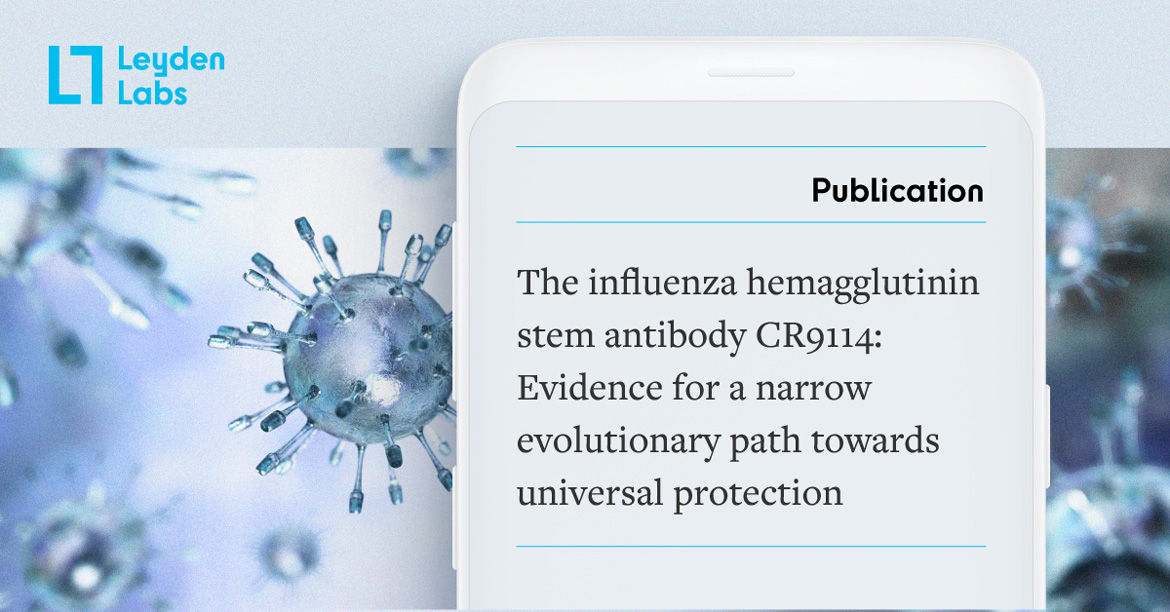
November 02, 2022
New publication highlights the secret to CR9114’s pan-influenza protection
Recently, our article entitled “The influenza hemagglutinin stem antibody CR9114: Evidence for a narrow evolutionary path towards universal protection,” appeared in a special issue of Frontiers in Virology on the role of genetic and structural insights of neutralizing antibodies to guide viral vaccine design. Read it here.
The influenza virus comes in many shapes and forms. There are twenty subtypes (H1 to H18, B/Yam and B/Vic) within three broad groups (influenza A1, A2 and B) that frequently infect humans. Scientists have long searched for a pan-influenza vaccine effective against all these types of influenza. However, today our best approach remains the ‘quadrivalent’ yearly flu vaccine, consisting of a mixed vaccine again just four viral subtypes. Mismatch between the vaccine strains and the circulating strains are common.
The closest any drug has come to pan-influenza protection is the human monoclonal antibody CR9114, which has been shown to protect against both influenza A and B subgroups. This antibody is thus the best candidate to guide viral vaccine design. In our review we analyzed CR9114’s structural characteristics, evolutionary pathway and mechanisms of pan-influenza protection.
CR9114 provides broad in vivo protection through its use of multiple mechanisms of action, ranging from fusion inhibition to steric hindrance of neuraminidase and Fc effector functions.
The basis of CR9114’s broad protection is its ability to bind all influenza subtypes. It has a flexible structure: its complementarity-determining regions and framework regions form a series of flexible loops that can form hydrogen bonds and salt bridges with influenza A1, A2 and both B lineages. Evolutionary pathway analysis shows that the acquisition of binding breadth to all these influenza subtypes is extremely rare.
This review is the first to encapsulate the ten years of research done to-date on CR9114, highlighting the special features of CR9114 and linking in vitro and in vivo data on its breadth of protection.
These special qualities of CR9114 may explain why it’s so famous in the scientific community. Hundreds of papers investigated CR9114 or used it as a control or a proof-of-principle, including multiple papers in Science and Nature.
OUR NEW APPROACH | OUR TEAM | JOIN OUR MISSION | NEWS | CAREERS
Leyden Laboratories B.V.
Leiden Laboratory
Emmy Noetherweg 2
2333 BK Leiden
The Netherlands
Leyden Labs Asia Pte. Ltd.
79 Science Park Drive
#04-05, Cintech IV
Singapore 118264
© Leyden Labs, 2023 | Privacy Statement | Design by Ape to Zebra